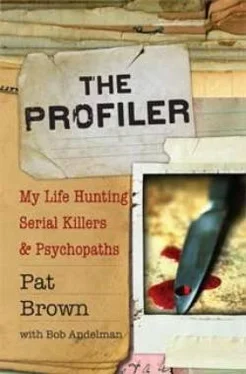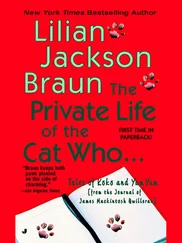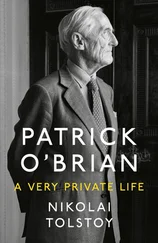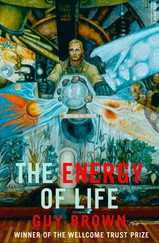IT WAS LATER discovered that Mary Beth called a girlfriend at 9:15 a.m. on the day she died, and they planned to meet for a nice Italian lunch that day. She even sent an e-mail confirming, “See you at noon for lunch.”
The police didn’t know about this call or e-mail when they forced a confession from Sam.
Mary Beth never showed up for lunch, and it wasn’t her style to not keep her appointments.
Why did Mary Beth stand up her friend? Why did she miss a noon appointment if nothing happened to her until six p.m.?
And that was just the beginning.
MARY BETH TOWNSEND’S death was one of eight homicides in the county that year, according to the local paper. It remains the department’s only unsolved case of 1998.
The second problem for the police and their forced confession was that Sam had solid alibis and plenty of witnesses as to his whereabouts all day and night.
His time card authenticated that he was at the store where he worked, except from 12:45 p.m. to 1:45 p.m., when he left to buy lunch. But witnesses said he was gone for only five minutes and ate his lunch at the store, off the clock.
It was a thirty-minute round trip to the condo and back. He wasn’t gone long enough to make the drive and kill Mary Beth. Besides, if he left at 12:45 and drove home, Mary Beth would have already been off enjoying food and wine with her girlfriend at the restaurant.
Sam also produced a receipt that showed he was pumping gas at a service station at 5:12 p.m. So we know that he was at work all day, barring the few minutes to go out, grab lunch, and bring it back, that he left work at the normal time, got some gas, and drove home. Now, it was six p.m. Once he was home, Sam was seen in the building doing his laundry and talking to neighbors at the same time that the police theorized that he was on the other side of town, disposing of Mary Beth’s car.
Again, at the time of his forced confession, the police didn’t know that neighbors had seen Sam doing laundry between nine and ten p.m.
THE THIRD PROBLEM was that the medical examiner came back and said that Mary Beth had been strangled. That was not in the confession, essentially because the police never told Sam that he had strangled Mary Beth. They said he hit her, so that’s what he confessed to under extraordinary pressure.
The police had a false confession. People have a hard time understanding why anybody would confess falsely, but it’s more common than people realize. Art Townsend’s lawyer-he got one when the police started implicating him along with Sam-told me that the very detective who pressured Sam to confess claimed that 70 percent of the people he got to confess were innocent, something of which I wouldn’t have been so proud, but he bragged about it.
In fact, the police department was sued because the same detective also forced a false confession out of a man accused in a woman’s brutal rape and murder in 1984. He went to prison, and it wasn’t until three years later that another detective in the department began to suspect that he was innocent. He was released after another two years of investigation, DNA testing, and paperwork. The real murderer, a cat burglar, was finally convicted. DNA proved he did it; the man was also a serial killer. The falsely accused man spent five years in prison convicted of a crime he didn’t commit. He got $117,000 from the state for his pain and suffering.
When Mary Beth Townsend was murdered, that same detective finagled an equally false confession out of Sam Bilodeau.
At that point, the police told Sam, “Don’t leave town,” and he stayed. The case lay dormant for a long time. The police told the community, “There’s nothing to be worried about,” insinuating that Sam was responsible in spite of evidence that seemed to prove that he was not.
ART TOWNSEND, MARY Beth’s son, became frustrated because nothing was happening with the case and it was going nowhere.
In September 1999, Art contacted me.
“Can you help with this case? I don’t think Sam killed my mother, and I want somebody to find out the truth,” he said.
I was excited to get the call. I was going to talk with the case investigator and see the crime scene photos and everything else related to the case. I was going to help them out, and this was where I got my first comeuppance.
When I dealt with the Anne Kelley case, I knew that I was not considered a friend of the police department-I lived in the community, was directly impacted by Anne’s murder, and was a common housewife-but this was a totally different situation. This was not a personal case to me. This was not a case that I brought to them as a citizen. This was a case in which a family member asked me to see the police as a profiler, admittedly new in the field, so law enforcement might have an issue with that.
Now that I was working in a professional capacity, I thought that Art and I would sit down with the police detective and he would say, “We are kind of stuck. If you want to look at things, we’d like to hear your thoughts.” It didn’t go well. The detective in charge was not pleased that Art had the audacity to bring in an outsider to examine her case. The police were working the case and she didn’t appreciate any implication that they weren’t doing their job well in spite of the fact that they had made no progress on the case whatsoever. They did not want anything going public that would make the police department look bad.
She greeted me coldly and told me in no uncertain terms that I was not welcome.
“I refuse to discuss this case with you or the family,” she said. “If you go public you had better be careful with what you say because I have done a lot of work on this case.”
That caused a dilemma, because I obviously would have liked to see all the evidence in their possession. Should I profile a case if I can’t access the case information and the case photos?
Ideally, I want the police department’s cooperation and access to every shred of evidence I can possibly see, all of the reports, all of the photos. But the reality is that even a police investigator sometimes doesn’t have all of this when he works a case. There are many pieces of evidence that might be missing. Maybe the elements have destroyed it. Evidence may have also been negatively impacted by first responders at the scene, by the fire department hosing down a place that was on fire. Things may have gotten lost on the way to the lab. They may have been misplaced in an evidence locker. They may have degraded. A witness may have disappeared so we can’t get a statement. In a perfect world, I would have 100 percent of all possible information and evidence. But in the real world, I get what I get.
Does that mean if I don’t have everything, I shouldn’t try to be helpful?
The police department and the medical examiner’s office refused to officially tell the family the time of death and refused to allow the family the right to see the autopsy report, even after Mary Beth’s son, Art Townsend, went to court over the matter.
The family wanted to know: Why were no other suspects being considered? Was this really a death from a domestic dispute or was it a burglary-related homicide that was never investigated as such? If Mary Beth Townsend’s fiancé was really involved with her death, why did the department stall on an arrest? Were they struggling to make conflicting facts fit the story? Were they wasting time focusing on the fiancé rather than pursuing other leads?
The police also successfully resisted the local newspaper in its investigation. The newspaper filed a Freedom of Information Act (FOIA) request that resulted in the release of some basic information but not the autopsy report its reporters (and Art) sought.
On the other hand, I did have information that was available through Mary Beth’s son. I was also able to interview Sam Bilodeau, her fiancé, and hear his story, and determine whether I thought it was a fabrication or whether he was telling the truth.
Читать дальше












